Yunque national forest puerto rico: El Yunque National Forest – Home
El Yunque National Forest – Recreation Passes & Permits
Español
Reservation Ticket for El Yunque (La Mina Recreation Area – Rd 191 N)
Reservations for tickets are available at Recreation.gov
Know Before You Go:
The health and safety of the public and Forest Service employees is our priority. To reduce crowding and to operate within COVID-19 public health guidelines a reservation system is being implemented along Rd 191 corridor (La Mina Recreation Area starting near La Coca Falls – Km 8.1 Rd 191). When visiting this area an entry ticket will be required. You can get these in advance of your visit at Recreation.gov or on the recreation.gov mobile app.
- Reservations can be made on internet-connected devices, including smart phones. You need to create a Recreation.gov account first in order to reserve tickets.
- Reservations can be made up to one month in advance through Recreation.
 gov. A percentage of reservations will be held for release 24 hours prior to entry to accommodate spontaneous outdoor visits. These 24 hour reservations are realeased at 8:00 a.m. and 11:00 a.m. local time.
gov. A percentage of reservations will be held for release 24 hours prior to entry to accommodate spontaneous outdoor visits. These 24 hour reservations are realeased at 8:00 a.m. and 11:00 a.m. local time. - Recreation.gov charges a $2 service fee payable by credit card.
- Visitors must display a printed or digital ticket to enter. The tickets are issued per vehicle. Person named on entry ticket must be present in vehicle at time of entry. Entry to the main recreation area with tickets will be honored between 8a.m. and 3 p.m. The main recreation area closes at 5:00 p.m..
- Visitor capacity is about 300 vehicles per day.
- Visitors must follow health and safety rules. Visitors are asked to follow guidelines for social distancing, reduced crowding, trash management, and parking.
- Reservations are not required outside the Road 191 corridor (Roads 988, 186, and 191 South in Naguabo).
- Entry on Road 191 may close when capacity is reached or during hazardous weather.
 If there is a need to close the Forest, those with reservations will receive a notification.
If there is a need to close the Forest, those with reservations will receive a notification. - Entry ticket reservations are not required for tours booked with an authorized tour operator under a special use permit. There are no commercial ridesharing companies or services permitted to operate in El Yunque.
Outdoor Safety and Ethics
When visiting El Yunque National Forest at this time we ask that you please do your part and follow these health and safety guidelines to prevent the spread of COVID-19:
- Do not visit recreation areas if you are sick
- Look for alternative sites if an area or trail are crowded
- Maintain social distancing of 6 feet from other people
- While on trails alert others of your presence. Step aside to let others pass at a safe distance
- Follow local or federal restrictions on group size
- Park in designated areas – Do not block gates or roads
- Practice “Leave No Trace” principles while visiting the Forest.
 Be sure to pack out all your trash.
Be sure to pack out all your trash. - Bring enough water and supplies to sustain during your visit.
- Be prepared for rain. Flash flooding occurs regularly.
- The CDC and Leave No Trace have further guidelines on outdoor safety and responsible recreation
Boleto de Reservación para El Yunque (Área Recreacional La Mina – 191 N)
Las reservacións para boletos de entrada están disponsibles en Recreation.gov
Se requerirán reservaciones a partir del 20 de diciembre
Que debes saber antes de ir:
La salud y seguridad del público y los empleados del Servicio Forestal son nuestra prioridad. Se estará implementando un sistema de reservaciónal a lo largo de Carr. 191 (Área Recreativa La Mina comenzando cerca de la cascada La Coca – Km 8.1 en Carr. 191) para reducir la conglomeración y operar dentro de los protocolos de salud pública de COVID-19. Se requerirá un boleto de entrada para visitar el área antes mencionada. Debe obtenerlos antes de su visita en Recreation.gov o en la aplicación móvil.
Debe obtenerlos antes de su visita en Recreation.gov o en la aplicación móvil.
- Se puede realizar reservaciones en dispositivos conectados a Internet, incluyendo los teléfonos inteligentes (smartphones). Tienes que crear una cuenta con Recreation.gov para poder reservar los boletos.
- Las reservaciones estarán disponibles a partir de 30 días de anticipación a través de Recreation.gov. Un número limitado de los boletos estarán disponible con 24 horas anticipación de la visita planificada. Estos boletos limitados están disponibles a las 8:00 a.m. y 11:00 a.m. del tiempo local.
- Los boletos son gratuitos, pero Recreation.gov cobra una tarifa $ 2 para procesar las reservaciones.
- Los visitantes deben mostrar el boleto impreso o digital para entrar. Los boletos de reservación son por vehículo. La persona que realice la reservación debe estar presente en el vehículo al momento de la entrada.
- Los boletos son validos para entrar entre a las 8 a.
 m. y las 3 p.m.. El Área Recreativa La Mina cerrará el portón a las 5:00 p.m.
m. y las 3 p.m.. El Área Recreativa La Mina cerrará el portón a las 5:00 p.m. - La capacidad será de alrededor de 300 vehículos por día.
- Los visitantes deben seguir los protocolos de salud y seguridad, manejo de basura y estacionamiento en áreas designadas.
- No se requieren reservaciones fuera del Área Recreativa La Mina, PR191 (carreteras 988, 186 y 191 sur en Naguabo).
- La entrada a PR191puede cerrarse cuando se alcanza la capacidad máxima o de haber condiciones del tiempo peligrosas. Si es necesario cerrar el bosque, aquellos con reservación anticipada recibirán una notificación.
- Las reservaciones son para uso público y no están autorizadas para uso comerciales. Si reserva un recorrido con un operador turístico autorizado, no se le requiere un boleto de entrada.
Etica al aire libre y Seguridad
Al visitar el Bosque Nacional El Yunque en este momento, le pedimos que haga su parte y siga estos protocolos de salud y seguridad para evitar la propagación de COVID-19:
- No visite áreas de recreación si está enfermo.

- Busque áreas o veredas alternas de estar llenas.
- Mantener distanciamiento social de otros visitantes de 6 pies.
- Mientras esté en las veredas, alerta a otros de tu presencia. Hazte a un lado para dejar que otros pasen a una distancia segura.
- Siga las restricciones locales o federales sobre el tamaño de los grupos.
- Estacione en áreas designadas: no bloquee portones o caminos
- Practique los principios de “Leave No Trace” mientras visita el bosque.
- Asegúrese de llevarse toda su basura.
- Traiga suficiente agua y suministros para su visita.
- Prepárate para la lluvia, inundaciones repentinas ocurren con regularidad.
- La CDC y Sin Dejar Huellas tienen protocolos adicionales sobre la seguridad al aire libre y la recreación responsable
El Yunque National Forest – Alerts & Notices
Current weather conditions from the National Weather Service (NWS) are updated continually.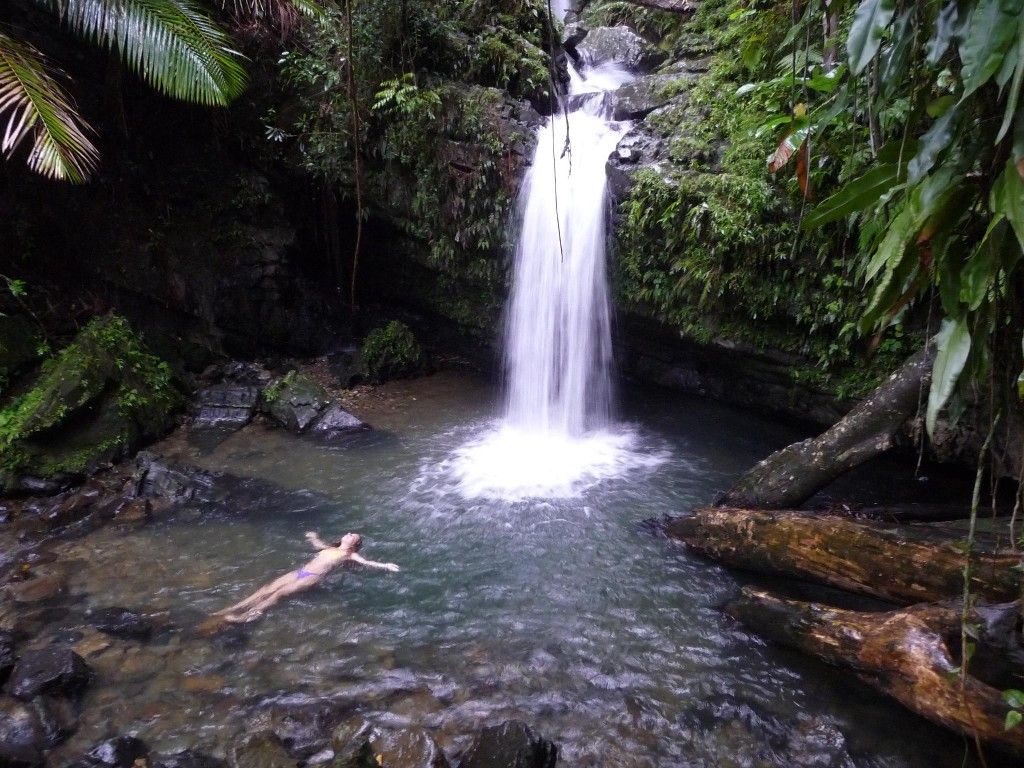 Weather information is derived from National Weather Service data. Please see our weather conditions disclaimer.
Weather information is derived from National Weather Service data. Please see our weather conditions disclaimer.
Las condiciones actuales del clima se actualizan continuamente en el Servicio Nacional de Meteorología ( NWS). La información sobre el tiempo se obtiene del Servicio Nacional de Meteorología. Véase nuestra relevo de responsabilidad sobre el estado de tiempo.
Currently there are no ongoing fires or emergencies. When incidents occur, this is the location where we will provide up to date information.
En estos momentos no hay ningún incendio ni emergencia. Cuando ocurra algún incidente, en esta sección se proveerá información actualizada.
- El Yunque is partially open after Hurrican Fiona
Date(s): Oct 10, 2022
El Yunque National Forest is partially open, and not all trails are available.
 The open trails in the 191 north corridor are: Mt. Britton, Mt. Britton Spur, La Roca, Los Picachos, La Coca (until the second creek) and Juan Diego. The Yokahú area is open too. El Portal Visitor Center, Angelito Trail, and Puente Roto recreational area, in Luquillo, are also open.
The open trails in the 191 north corridor are: Mt. Britton, Mt. Britton Spur, La Roca, Los Picachos, La Coca (until the second creek) and Juan Diego. The Yokahú area is open too. El Portal Visitor Center, Angelito Trail, and Puente Roto recreational area, in Luquillo, are also open. The Palma de Sierra Picnic Area and food concessionaire will be closed for maintenance until October 17th.
The Palo Colorado Station recreational areas are open, including the restrooms, but the Para La Naturaleza store and interpretive tours will not be available until October 19th.
- El Yunque reabre parcialmente tras el huracán Fiona
Date(s): Oct 10, 2022
El Yunque continúa está abierto de forma parcial.
 No todas las veredas están disponibles. Las veredas que están abiertas en el corredor de la PR 191 norte son: Mt. Britton, Mt. Britton Spur, La Roca, Los Picachos, La Coca (hasta el segundo arroyo) y Juan Diego. También está abierta el área de Yokahú. También están abiertos el centro de visitantes El Portal, la vereda Angelito y el área recreativa de Puente Roto.
No todas las veredas están disponibles. Las veredas que están abiertas en el corredor de la PR 191 norte son: Mt. Britton, Mt. Britton Spur, La Roca, Los Picachos, La Coca (hasta el segundo arroyo) y Juan Diego. También está abierta el área de Yokahú. También están abiertos el centro de visitantes El Portal, la vereda Angelito y el área recreativa de Puente Roto. El área de picnic Palma de Sierra aún permanece cerrada. El concesionario de comida estará cerrado por mantenimiento hasta el 17 de octubre.
En cuanto a la Estación Palo Colorado, las áreas recreativas están abiertas, incluyendo los baños, pero la tiendita y los recorridos interpretativos de Para La Naturaleza no estarán disponibles hasta el 19 de octubre.
- Cierre debido a tormenta tropical / Closure due to tropical storm
Date(s): Sep 27, 2022
Tras el paso del huracán Fiona por Puerto Rico, las áreas recreativas de la PR-191, en Río Grande, permanecen cerradas debido a deslizamientos activos y mientras se realiza la evaluación de daños necesaria.
 El centro de visitantes El Portal de El Yunque ya está abierto para los visitantes.
El centro de visitantes El Portal de El Yunque ya está abierto para los visitantes.Manténganse conectados a nuestras redes sociales para actualizaciones relacionadas a nuestras operaciones.
After hurricane Fiona, the recreational areas of PR-191, in Río Grande, will remain closed due to active landslides and while the necessary damage assessment is completed. El Portal Visitor Center is open again to the visitors.
Stay tuned to our social media for updates related to our operations.
- Partial closure for emergency work on PR-186
Date(s): Jul 19, 2022 – Nov 20, 2023
From August 1, 2022, PR-186, between Canóvanas and Río Grande, will be closed in two sections for emergency work:
km 17.
 7 to km 19.7 (North) – Local traffic only. Works will conclude on January 31, 2022.
7 to km 19.7 (North) – Local traffic only. Works will conclude on January 31, 2022.km 13.1 to km 17.7 (South) – will operate a single lane for local traffic and visitors. Construction work will be extended from October 1, 2022 to November 20, 2023.
Alternate routes:
Río Grande to Canóvanas, from PR-3 West, take the ramp towards Route PR-66, and continue through Exit 19, towards PR-956, until the Int. with PR-186, at km 13.3.
Canóvanas to Río Grande (PR-3), from PR-186, km 13.3, take PR-956 towards Int. with PR-66 and follow the ramp at the Exit 20 towards PR-3 East.
- Cierre parcial por trabajos de emergencia en la PR-186
Date(s): Jul 19, 2022 – Nov 20, 2023
Desde el 1 de agosto de 2022, se cerrará en dos tramos la PR-186, entre Canóvanas y Río Grande, por trabajos de emergencia:
km 17.
 7 al km 19.7 (norte) – Solo tránsito local. Trabajos concluirán el 31 de enero de 2022.
7 al km 19.7 (norte) – Solo tránsito local. Trabajos concluirán el 31 de enero de 2022.km 13.1 al km 17.7 (sur) – operará un carril para tránsito local y visitantes. Labores se extenderán desde el 1 de octubre de 2022 hasta el 20 de noviembre de 2023.
Rutas alternas:
Río Grande a Canóvanas, desde la PR-3 oeste, tomar la rampa hacia la ruta PR-66, y continuar por la salida 19, hacia PR-956, hasta la int. con PR-186, en el km 13.3.
Canóvanas a Río Grande (PR-3), desde la PR-186, km 13.3, tomar la PR-956 hacia la int. con la PR-66 y seguir por la rampa en la salida 20 hacia la PR-3 este.
- Bisley Road/Trail closed for construction works
Date(s): Jun 28, 2022
Starting this Wednesday, June 29, 2022, Bisley Road and Trail in Luquillo, as well as the adjacent road, will be temporarily closed for safety reasons, while a culvert pipe is installed.
 The closure will last a couple of weeks. As soon as the trail and the road reopen, it will be informed.
The closure will last a couple of weeks. As soon as the trail and the road reopen, it will be informed. - Carretera/Vereda Bisley cerradas por trabajos de construcción
Date(s): Jun 28, 2022
A partir del miércoles, 29 de junio de 2022, la vereda y carretera Bisley, en Luquillo, así como la vía adyacente, se cerrarán temporeramente por razones de seguridad, mientras se instala una tubería de alcantarilla. El cierre se extenderá un par de semanas. Notificaremos al público tan pronto la vereda y la carretera reabran.
- Rd 9938 Repairs – Closed to Vehicles / Pedestrian Access to Mt.
 Britton Trail
Britton Trail
Date(s): Mar 14, 2022
Construction work will begin along highways PR-191, 9938, 988 and 9966, (Río Grande and Luquillo) and will affect vehicular traffic and pedestrian access to some areas.
Starting Tuesday March 15 work will begin on retaining walls from landslides that occurred during Hurricane María and to mitigate possible landslides in the future. The roundabout on Rd 9938 will close to vehicles, however visitors will have pedestrian access to the Mt. Britton Trailhead. PR-191, at 9938, will become a two-way road. Additional signage will be installed in assigned parking areas to guide visitors.
This phase of the overall three-year construction project will run for six months.
Reservations for this area are available in Recreation.gov and are limited due to reduced parking capacity. Tickets in the reservation system are available 30 days in advance and a limited number are available the day before.

View More Alerts
El Yunque National Forest
El Yunque National Forest is located in the northeast of the island of Puerto Rico, on the slopes of the Sierra de Luquillo, 40 km from the capital San Juan. The forest was declared a protected area back in 1876 by King Alfonso XII of Spain, making El Yunque the oldest nature reserve in the Western Hemisphere. In 1903, the reserve was named the Luquillo Forest Reserve, in 1906 it was declared a Caribbean National Forest, and in 2007 it was renamed the El Yunque National Forest. Locals, for the abundance of precipitation (up to 508 centimeters per year) falling in these places, call it Rain Forest (Rain Forest). El Yunque covers an area of 28900 acres, which is divided into four areas – Tabonuco forest (dense forest with tall trees, due to the dense crown of which sunlight hardly penetrates the lower forest layer), Palo Colorado forest (grows on gentle slopes and in valleys with marshy soil, characterized by low trees with a weakly developed root system), Sierra Palm Forest (forest with low-growing trees growing on steep slopes, at an altitude of about 450 meters above sea level, on unstable ground) and Dwarf Forest (dwarf trees growing at an altitude of 900 meters above sea level, the forest is almost always shrouded in fog, for which it is called the elven forest). The landscape of the forest is diverse – rocks, valleys, waterfalls and mountain streams. Due to the diversity of flora and fauna living in the National Forest, El Yunque has received the status of a biosphere reserve and is under the protection of the United Nations. El Yunque has 150 species of ferns and 240 species of trees, of which 88 are endemic and 23 species are found only in this forest. Exotic trees and shrubs with human-sized leaves, many types of orchids, lianas, bromeliads, mosses and other epiphytes grow here. There are no large animals in El Yunque, but birds, amphibians, reptiles and insects abound. About 13 species of tree frog Coqui (leaf frog) live in the forest, their so-called “singing” is heard throughout El Yunque from dusk to dawn. These small frogs (the largest are about 5 centimeters) make such loud noises that a small colony of coca can easily deafen a person. Their croaking is called the “hellish chant” by the locals. About 50 species of birds have been identified in the protected forest, among them there are many rare and endemic species.
The landscape of the forest is diverse – rocks, valleys, waterfalls and mountain streams. Due to the diversity of flora and fauna living in the National Forest, El Yunque has received the status of a biosphere reserve and is under the protection of the United Nations. El Yunque has 150 species of ferns and 240 species of trees, of which 88 are endemic and 23 species are found only in this forest. Exotic trees and shrubs with human-sized leaves, many types of orchids, lianas, bromeliads, mosses and other epiphytes grow here. There are no large animals in El Yunque, but birds, amphibians, reptiles and insects abound. About 13 species of tree frog Coqui (leaf frog) live in the forest, their so-called “singing” is heard throughout El Yunque from dusk to dawn. These small frogs (the largest are about 5 centimeters) make such loud noises that a small colony of coca can easily deafen a person. Their croaking is called the “hellish chant” by the locals. About 50 species of birds have been identified in the protected forest, among them there are many rare and endemic species.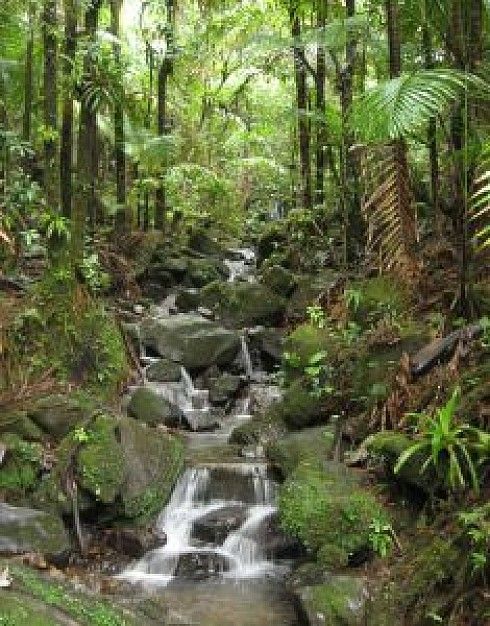 The Puerto Rican parrot Amazona vitatta lives only in the dwarf forest of El Yunque. For visitors to the National Forest, tourist routes of varying complexity have been developed, hiking trails have been laid, an information center El Portal Visitors Center has been created, recreation areas, parking lots, observation towers are equipped, and excursions are conducted.
The Puerto Rican parrot Amazona vitatta lives only in the dwarf forest of El Yunque. For visitors to the National Forest, tourist routes of varying complexity have been developed, hiking trails have been laid, an information center El Portal Visitors Center has been created, recreation areas, parking lots, observation towers are equipped, and excursions are conducted.
- Source:
https://tury.ru
Pictures:
National parks and reserves in Puerto Rico / Travel.
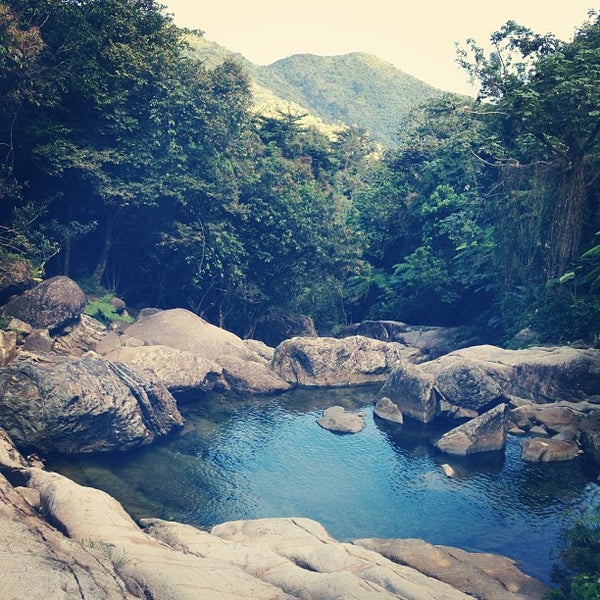 Ru / Countries / Puerto Rico
Ru / Countries / Puerto Rico
Despite the small size of the island, about 1.2% of its territory is given over to nature reserves and national parks.
The El Yunque Rainforest, located in the northeastern part of Puerto Rico, is the national pride of the country and is often referred to as the “Caribbean National Forest”, and Puerto Ricans themselves like to emphasize that this is the only rainforest in the United States (the reserve area is 28 thousand acres) . Birds, reptiles and amphibians thrive in this soaking wet national park, which receives more than 200 million liters of rain a year. Here it is possible to see a rare Puerto Rican parrot, more than 400 species of tropical trees, ferns and unique dwarf orchids grow, and hundreds of small waterfalls fall within the park. The Puerto Rican frogs living here, known as “koki”, are a symbol of the island, although their presence can only be felt by sound and few tourists can see them – the largest “coki” is no more than 5 centimeters in length.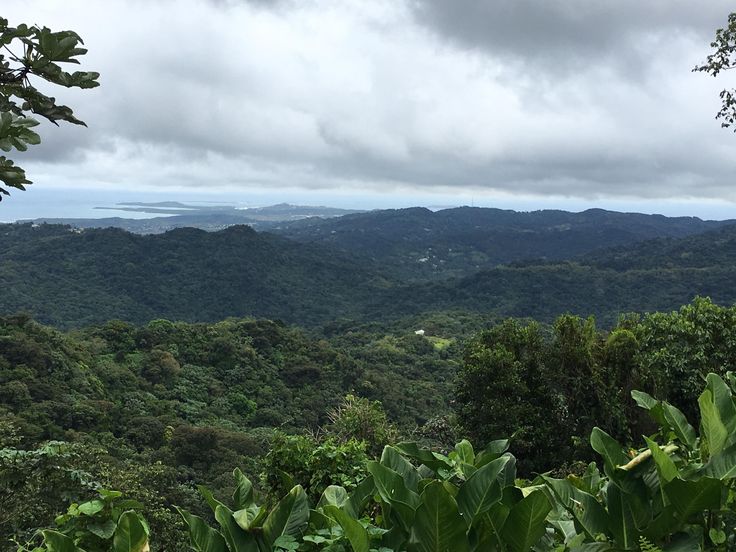 These small creatures manage to make such loud “ko-kii” sounds (hence their name) that even a small colony of croaking frogs can deafen a person, the locals even have their own term for this – “hellish chant”.
These small creatures manage to make such loud “ko-kii” sounds (hence their name) that even a small colony of croaking frogs can deafen a person, the locals even have their own term for this – “hellish chant”.
Another protected forest area is in the Palo Colorado region (also included in El Yunque). A small area of relict rainforest here is the last fragment of the once lush massifs, whose trees reach a height of 60 meters and are about a thousand years old. Many lowland areas here have ecocenoses that are somewhat different from the northern part of the massif. Tabonuco palm trees, ausubo trees, more than 50 species of orchids, numerous ferns and mosses grow here. And closer to the tops of the mountains stretches a strip of rain forests, also known as “dwarf forest”, where trees, pressed to the ground by strong winds, rarely grow more than 6 meters. There are many hiking trails throughout the forest with a total length of more than 40 km, and it is best to start excursions from the Palo Colorado Information Center (open daily from 9.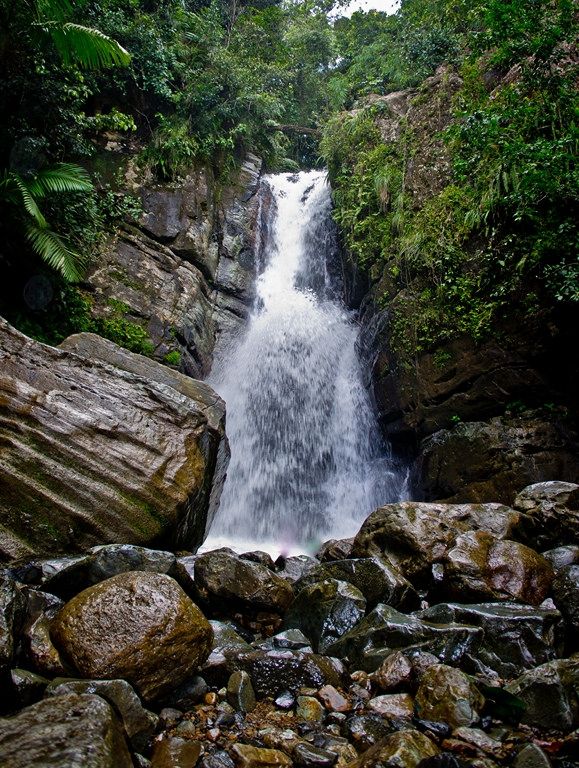 30 to 17.00).
30 to 17.00).
Around the highest peak of the country – Cerro de Punta (1339 m) and the highest mountain lake – Lago Guineo, there is the Togo Negro Forest Reserve. Here you can walk along five ecological trails, swim in Lake Guineo or the freshwater reservoirs of the Don Juan Recreational Area, visit the 60-meter Don Juan waterfalls or go hiking on the slopes of this beautiful mountain range.
Just 18 km from the capital of the island, the Pinones Reserve is located, protecting a long strip of mangrove swamps. About 320 species of plants, about 46 species of birds and 36 species of fish live here, and the reserve ends with the fantastic coast of Valsia-Talega Beach, dotted with boulders of the most unthinkable forms, interspersed with palm groves.
Rio Camai National Cave Park protects a karst region in northeast Puerto Rico. This area is famous for its completely surreal limestone formations and many caves, making it one of the best places in the world for caving.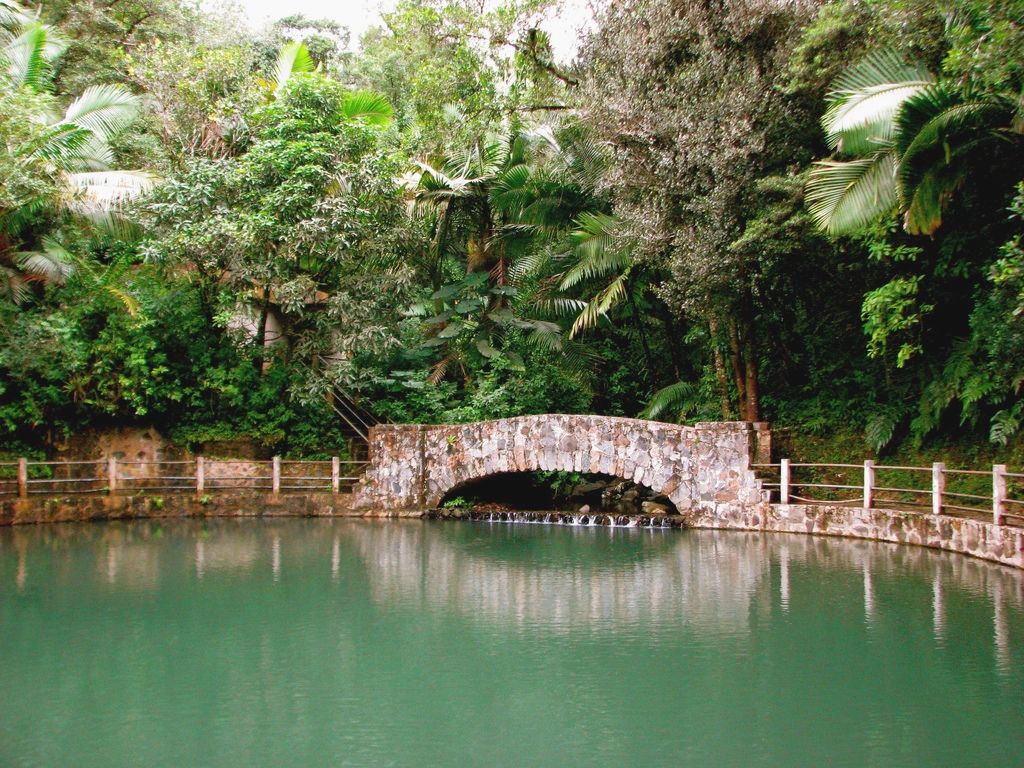 More than 200 caves have been discovered in this region, some of them have a colossal internal volume, and the Kamai River is one of the largest underground rivers in the world. Daredevils can rappel down to the recently discovered Catedral Cave, on the walls of which 42 Taino petroglyphs were found, or “dive” into sinkholes, from which you can get to the underground sections of the Rio Camai channel, along which rafting is often carried out. .
More than 200 caves have been discovered in this region, some of them have a colossal internal volume, and the Kamai River is one of the largest underground rivers in the world. Daredevils can rappel down to the recently discovered Catedral Cave, on the walls of which 42 Taino petroglyphs were found, or “dive” into sinkholes, from which you can get to the underground sections of the Rio Camai channel, along which rafting is often carried out. .
Not far from the “karst country” lies another national park of the country – the forest of Guahataca. Here, among dense forests with thick undergrowth, more than 50 km of trails have been laid that can serve as an acquaintance with the flora and fauna of humid subtropical ecosystems. There are usually few tourists here, which allows you to truly retire and explore both the green massifs of the region, as well as Lake Guahataca or the numerous caves that make up the Rio Camai system, including Wind Cave, famous for its stalactites and stalagmites.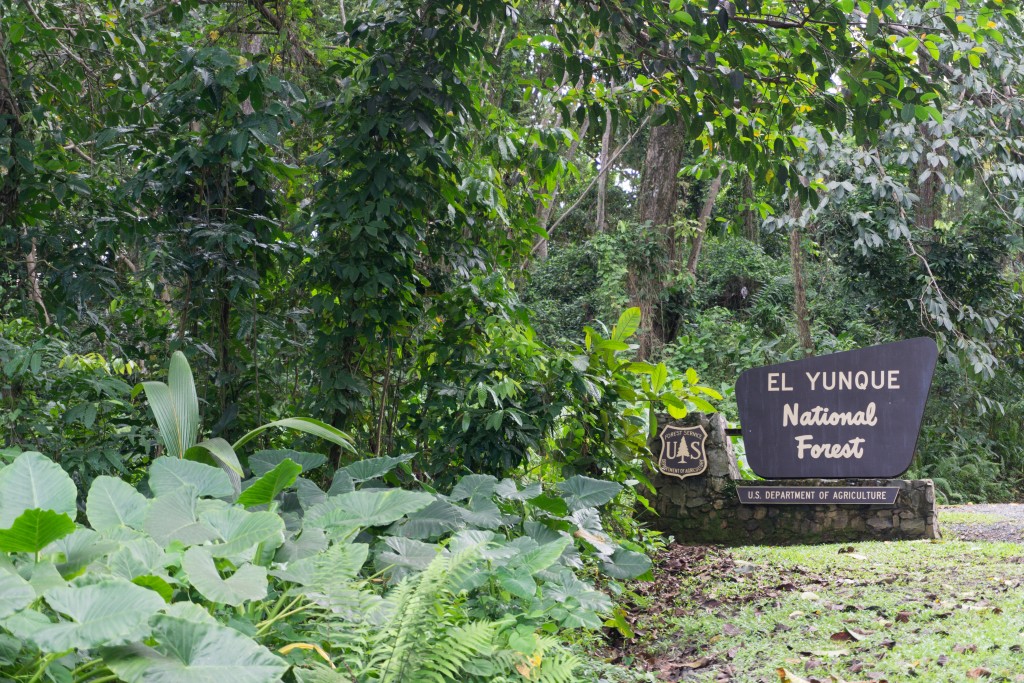
The islands of Mona and Monito are part of the Natural Nature Reserve of the same name, which protects the habitat of rare sea turtles, sea birds and marine mammals. The islands are sometimes called the “Galapagos of the Caribbean”, and the species composition of its inhabitants fully confirms this name. Coral reefs off the coast of the island are inhabited by more than 270 species of fish, and the colony of sea turtles is considered one of the largest in the region. To visit the islands you need a special permit.
The most famous reserve in the southern part of the island is the Guanica Forest Reserve (has the status of a Biosphere Reserve under the auspices of the UN). The protected area covers about 10,000 acres of dry coast and is inhabited by over 600 species of plants and animals, including 48 endangered species and 16 endemic to Puerto Rico. The enchanting landscape of the reserve is pastel hills, torn apart by dry tropical forests, so unlike the rain forests of the northern part of the island.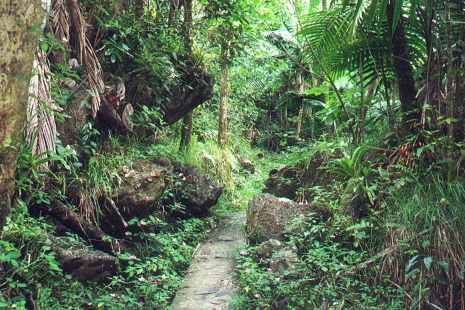 Nearby is the excellent resort area of Copamarina and the coast of Copa del Sol, widely known for its beautiful beaches.
Nearby is the excellent resort area of Copamarina and the coast of Copa del Sol, widely known for its beautiful beaches.
Tell about personal experience (Your text will appear on the site after checking by the editor)
Puerto Rico
Puerto Rico is not a very popular destination for Russian tourism, most of our compatriots will not be very interested here – there are few beaches here, strict laws, and even a US visa is needed. Read more →
mister_marat
|
2013
- 000+03:00″ itemprop=”published”> 17:26|16.09.2015
Rospotrebnadzor: Russians bring dengue fever from tropical countries
-
Puerto Rico awaits pizza and beer lovers
-
Tour on historic train
revived in Puerto Rico
-
The Caribbean is waiting for Russian tourists
-
Puerto Rico saves natural attractions
 gov. A percentage of reservations will be held for release 24 hours prior to entry to accommodate spontaneous outdoor visits. These 24 hour reservations are realeased at 8:00 a.m. and 11:00 a.m. local time.
gov. A percentage of reservations will be held for release 24 hours prior to entry to accommodate spontaneous outdoor visits. These 24 hour reservations are realeased at 8:00 a.m. and 11:00 a.m. local time. 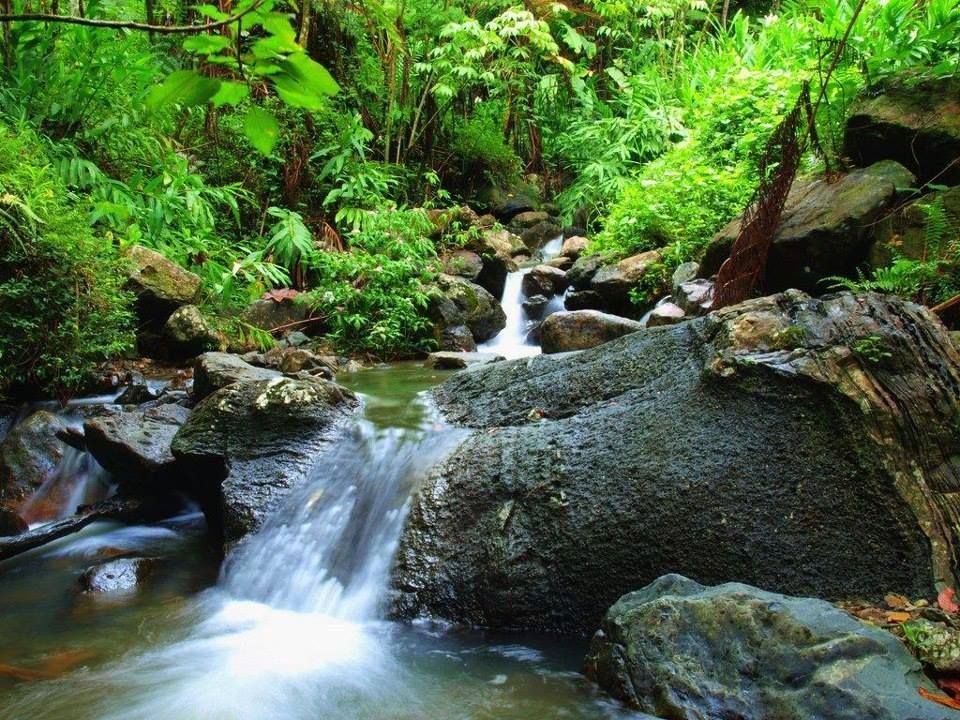 If there is a need to close the Forest, those with reservations will receive a notification.
If there is a need to close the Forest, those with reservations will receive a notification. Be sure to pack out all your trash.
Be sure to pack out all your trash. m. y las 3 p.m.. El Área Recreativa La Mina cerrará el portón a las 5:00 p.m.
m. y las 3 p.m.. El Área Recreativa La Mina cerrará el portón a las 5:00 p.m. 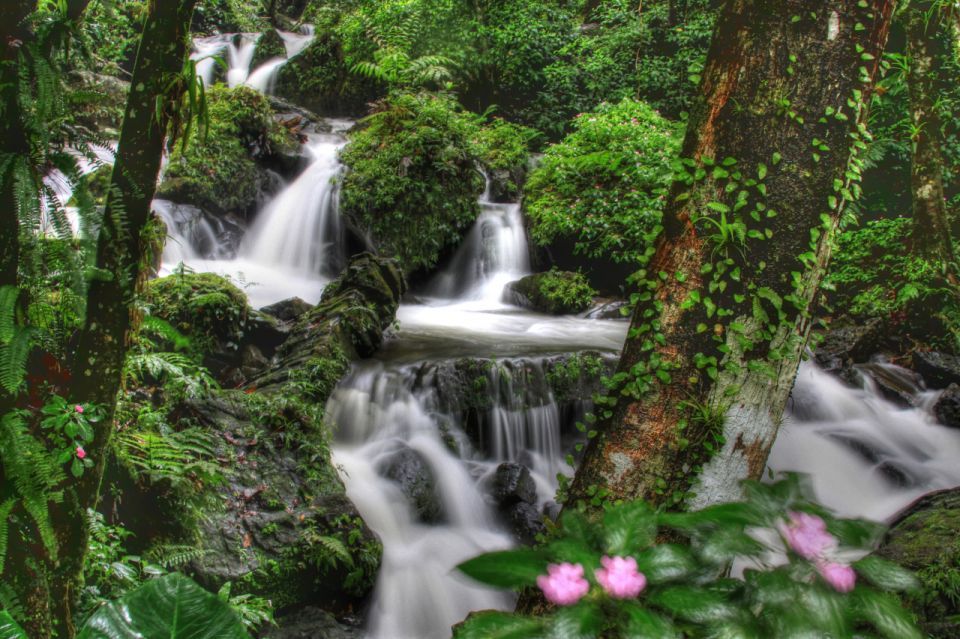
 The open trails in the 191 north corridor are: Mt. Britton, Mt. Britton Spur, La Roca, Los Picachos, La Coca (until the second creek) and Juan Diego. The Yokahú area is open too. El Portal Visitor Center, Angelito Trail, and Puente Roto recreational area, in Luquillo, are also open.
The open trails in the 191 north corridor are: Mt. Britton, Mt. Britton Spur, La Roca, Los Picachos, La Coca (until the second creek) and Juan Diego. The Yokahú area is open too. El Portal Visitor Center, Angelito Trail, and Puente Roto recreational area, in Luquillo, are also open.  No todas las veredas están disponibles. Las veredas que están abiertas en el corredor de la PR 191 norte son: Mt. Britton, Mt. Britton Spur, La Roca, Los Picachos, La Coca (hasta el segundo arroyo) y Juan Diego. También está abierta el área de Yokahú. También están abiertos el centro de visitantes El Portal, la vereda Angelito y el área recreativa de Puente Roto.
No todas las veredas están disponibles. Las veredas que están abiertas en el corredor de la PR 191 norte son: Mt. Britton, Mt. Britton Spur, La Roca, Los Picachos, La Coca (hasta el segundo arroyo) y Juan Diego. También está abierta el área de Yokahú. También están abiertos el centro de visitantes El Portal, la vereda Angelito y el área recreativa de Puente Roto.  El centro de visitantes El Portal de El Yunque ya está abierto para los visitantes.
El centro de visitantes El Portal de El Yunque ya está abierto para los visitantes.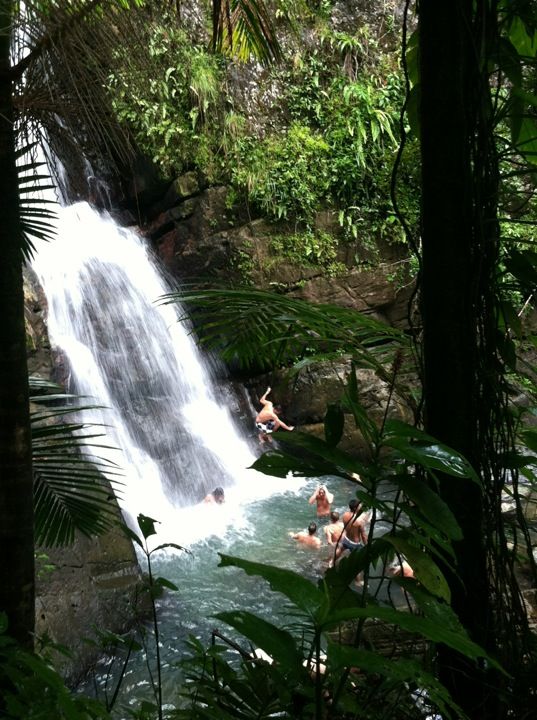 7 to km 19.7 (North) – Local traffic only. Works will conclude on January 31, 2022.
7 to km 19.7 (North) – Local traffic only. Works will conclude on January 31, 2022.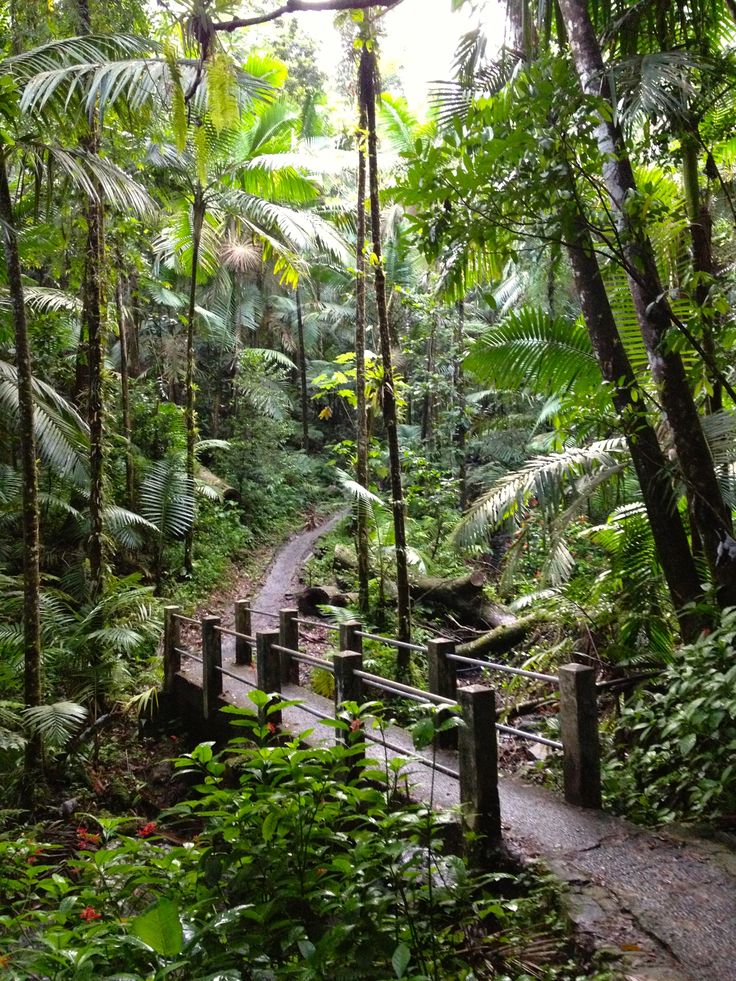 7 al km 19.7 (norte) – Solo tránsito local. Trabajos concluirán el 31 de enero de 2022.
7 al km 19.7 (norte) – Solo tránsito local. Trabajos concluirán el 31 de enero de 2022. The closure will last a couple of weeks. As soon as the trail and the road reopen, it will be informed.
The closure will last a couple of weeks. As soon as the trail and the road reopen, it will be informed. Britton Trail
Britton Trail
